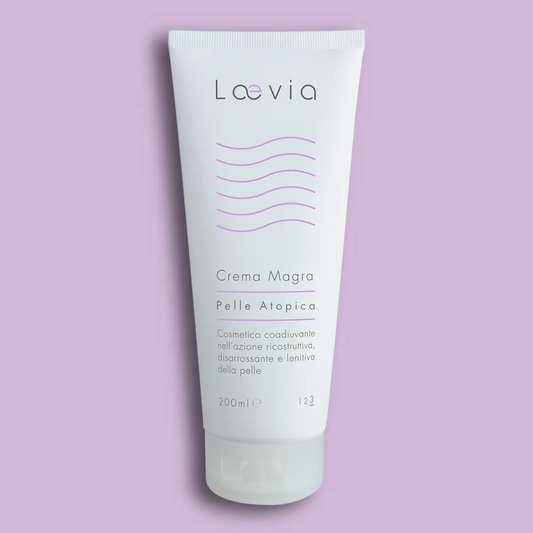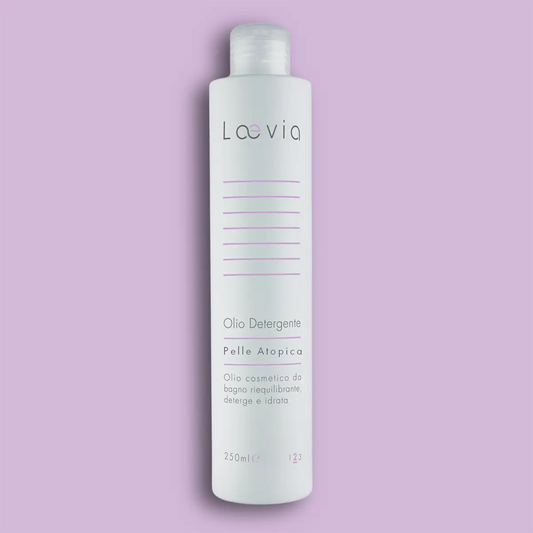Small dietary handbook to prepare good, healthy and above all anti-itch dishes for children suffering from atopic dermatitis.
For some children, food is a problem. Not due to a lack of appetite, but rather due to some skin diseases, such as atopic dermatitis, which can be stressed and exacerbated by some irritating components present in specific foods.
A big thought for mothers, who are careful to raise their children in the best possible way, respecting all the nutritional principles necessary for correct growth, without inducing side effects that worsen the quality of life for both the child, who experiences the discomfort first hand , both for the mother, who then has to worry about soothing the itching and redness typical of atopic dermatitis.
So here is a small dietary handbook to prepare good, healthy and anti-dermatitis dishes for little ones!
Prevention at the table?
Yes you can! Or at least dietary safety measures can be adopted to prevent even the post-meal moment, or the subsequent period of time, from turning into an itchy torment for the child.
Because, mother, you must know that atopic dermatitis is not a problem generated only by a genetic component that is impossible to cope with, but also by some sometimes incorrect behaviors mostly related to lifestyle. Among these there are also nutritional habits, which are very important from the early stages of life, because they can fuel or keep this skin disorder under control, alleviating its symptoms or delaying its appearance.
An indication, mother, that is all the more important to respect if you, your partner or both of you are suffering from atopic dermatitis or have been, as your baby will have a greater chance of developing this problem than parents who do not scratch.
Very first months
At birth, feed your baby your milk. Breastfeeding, especially in the first three months of life, especially in newborns with a high familiarity (first degree relationship), seems to reduce the risk of developing atopic dermatitis, at least in childhood. Although more rarely, this skin problem could in fact also manifest itself during growth or in adulthood.

Weaning
During weaning, or even in the immediately following food phases, try to avoid or make the child consume them with great caution, especially observing possible skin reactions, irritating foods (called food allergens) of which the main ones are the following:
- Egg
- Cow's milk and derivatives such as yogurt and fermented cheeses
- Dried and/or shelled fruit including peanuts, hazelnuts, walnuts and almonds
- Citrus fruits and, among fruit, especially pineapple and strawberries
- Tomatoes: contain a lot of nickel which is responsible for the onset of various forms of allergies, not just food allergies
- Spinach
- Soy
- Some types of fish and in particular shellfish (although it is not strictly a food for children, it is an important indication for the future!
- Preserved fish
- Canned foods
- Chocolate (which is always best to keep little ones away from)
- Sausages (unhealthy food at any age)
Green light to the Mediterranean diet
Some fundamental foods of the Mediterranean diet can have a protective action against the manifestations of dermatitis. Mum, when preparing your child's dishes, favor foods rich in fibre, mineral salts and vitamins, also preferring vegetable fats.
Bring plenty of fruit and vegetables to the table (with the exception of those not recommended, of course!), cereals, even better if whole grains, and fish, excluding those that are contraindicated.
W probiotics and supplements!
An effective preventative aid against mild forms of atopic dermatitis or in non-allergic children could be represented by the integration into the diet of some specific prebiotics, probiotics and synbiotics and supplements based on essential fatty acids, suggested by the pediatrician or specialist.
A review of 21 studies carried out on children up to 3 years old attests that some probiotics, in particular Lactobacillus rhamnosus GG , when taken by both the mother and the child, or even gamma-linoleic acid supplements present in large quantities in seed oil of blackcurrant, can help to contain, above all, the inflammatory component of the disease with beneficial effects on the general symptoms.
Water, what a passion
In addition to nutrition, hydration should not be forgotten: water can bring beneficial effects to the skin, first of all it reduces dryness which contributes to triggering itching and irritation. It is therefore a good idea to make the little ones drink a lot of water, possibly varied with other liquids but which are not sugary. Especially since sugars are not only bad for atopic skin, but also for weight and teeth!
If hydration is also increased by the consumption of fruit and vegetables, which contain a lot of water, even better. You have thus achieved the goal of deeply quenching the thirst of your little one's skin.
Cream from head to toe: that too is nourishment!
And to complete the work you started at the table, remember to sprinkle cream on your baby's skin every day, with delicate and dedicated products. That is, free of parabens, but also of some compounds identified with the acronyms SLS, SLES, PEG, PPG; perfumes, dyes, alcohol, petroleum and formaldehyde derivatives, silicone oils. Furthermore, they must also be products tested for nickel, i.e. they must not contain this metal nor be responsible for allergies.
In short, mother, you need to choose products that respect the natural pH of your baby's skin, and that are capable of carrying out a nourishing and emollient action, hydrating right down to the deepest tissues of the skin and above all soothing against the most unwanted effects of atopic dermatitis: itching, redness, inflammation and irritation.





